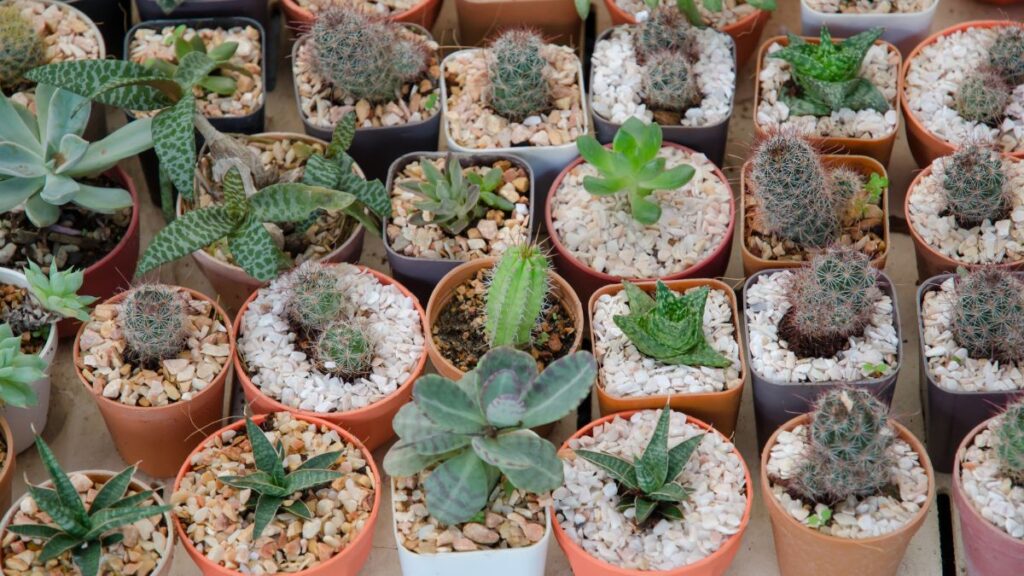Different Types of Sage Plants, pineapple sage, and Greek sage. Each type offers unique aromas, flavors, and uses.
Common sage, known for its earthy flavor, is commonly used in culinary dishes, while pineapple sage adds a citrusy touch and is often used in tea and cocktails. Greek sage, with its strong aroma, is popular for its medicinal properties.
Each type of sage plant has distinct characteristics, making them versatile additions to any garden or kitchen. Sage plants come in a variety of types, each offering unique aromas, flavors, and uses. From common sage with its earthy flavor to pineapple sage with a citrusy touch, and Greek sage with its strong aroma, these plants add versatility to any garden or kitchen.
1. Culinary Sages

Sage plants are not only known for their aromatic fragrance and ornamental appeal, but they also have a myriad of uses, particularly in the culinary world. The culinary sages are a diverse group of sage plants that are valued for their flavorful leaves which are commonly used in cooking, seasoning, and garnishing dishes.
Garden Sage
Garden sage, also known as Salvia officinalis, is one of the most popular culinary sages. Its velvety gray-green leaves and woody stems are widely used to add a robust and earthy flavor to various dishes. This perennial herb is known for its hardiness and ability to thrive in a variety of conditions, making it a favorite among home cooks and chefs alike.
Pineapple Sage
Pineapple sage, scientifically named Salvia elegans, is a unique culinary sage variety that offers a delightful twist with its pineapple-scented leaves. While its flavor profile is not as intense as garden sage, its sweet and fruity aroma makes it a wonderful addition to desserts, beverages, and fruit salads. The vibrant red flowers of pineapple sage also add a pop of color to any garden or culinary creation.
Clary Sage
Clary sage, or Salvia sclarea, is a lesser-known culinary sage variety with a distinctively musky and herbal flavor. Often used in Mediterranean cuisines, the leaves of clary sage can be employed to infuse oils, vinegar, or teas. In addition to its culinary applications, clary sage is also valued for its ornamental beauty, particularly due to its stunning clusters of purple or blue flowers.
2. Medicinal Sages
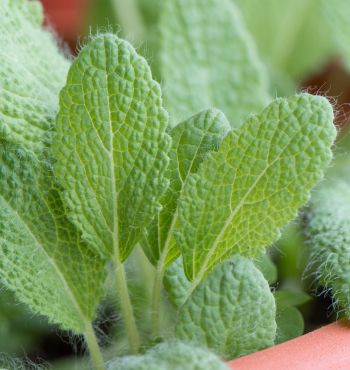
Common Sage
Common Sage (Salvia officinalis) is a well-known medicinal herb with a long history of use for its health benefits. It has antimicrobial and anti-inflammatory properties, making it a popular choice for treating sore throats, digestive issues, and menopausal symptoms. The leaves of Common Sage are rich in essential oils and can be brewed into a soothing tea or used in topical ointments to aid in wound healing.
White Sage
White Sage (Salvia apiana) has been traditionally used by indigenous cultures for purification and healing rituals. It is known for its distinct earthy aroma and has gained popularity for its potential medicinal properties, including its ability to clear respiratory congestion, promote relaxation, and ward off negative energies. The leaves of White Sage can be dried and burned as smudge sticks or brewed into a cleansing tea.
Greek Sage
Greek Sage (Salvia fruticosa) is a Mediterranean herb that has been valued for its medicinal and culinary uses. It contains powerful antioxidants and essential oils that contribute to its therapeutic effects, such as improving digestion, reducing inflammation, and supporting cognitive function. The fragrant leaves of Greek Sage are often incorporated into teas, tinctures, or essential oils for their health-promoting properties.
3. Ornamental Sages
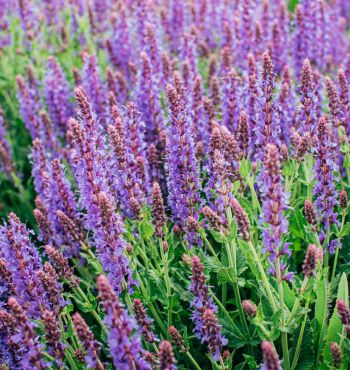
Purple Sage
Purple Sage (Salvia officinalis ‘Purpurascens’) is a stunning perennial herb that adds a burst of rich purple color to any garden. With its velvety gray-green leaves and vivid purple flowers, this sage variety is a showstopper. Purple Sage is not just visually appealing; it also releases a lovely fragrance when its leaves are crushed, making it a delightful addition to any herb garden.
This sage variety prefers well-draining soil and full sun, thriving best in USDA hardiness zones 5-9. Purple Sage is also known for its drought tolerance, making it an excellent choice for xeriscaping or water-wise gardens. Whether planted in containers, borders, or rock gardens, Purple Sage brings both beauty and functionality to any landscape.
Russian Sage
Russian Sage (Perovskia atriplicifolia) is a perennial that showcases airy spires of lavender-blue flowers atop silvery-gray foliage. This hardy sage plant is a favorite for its wispy appearance and ability to add an element of movement to garden beds. Russian Sage thrives in full sun and well-drained soil, performing well in USDA hardiness zones 4-9.
Not only does Russian Sage add beauty to the garden, but it also offers a lovely fragrance. The aromatic leaves emit a pleasant scent when brushed or crushed, attracting bees and other pollinators. This makes Russian Sage a valuable addition to wildlife-friendly gardens or those seeking to enhance their garden ecosystems.
Mexican Bush Sage
Mexican Bush Sage (Salvia leucantha), also known as Velvet Sage, is a stunning perennial that brings a touch of exotic beauty to the garden. With its abundant spikes of velvety purple flowers and soft gray-green foliage, Mexican Bush Sage creates a breathtaking display. This sage variety flourishes in full sun and well-draining soil, thriving in USDA hardiness zones 8-11.
What sets Mexican Bush Sage apart is its extended blooming period, typically lasting from late summer through fall. This extended display of vibrant purple and white flowers attracts butterflies, making it a favorite among butterfly gardeners. Moreover, the ornamental value of Mexican Bush Sage extends beyond its blooms, as its attractive silver-gray foliage adds texture and interest even when not in flower.
4. Aromatic Sages
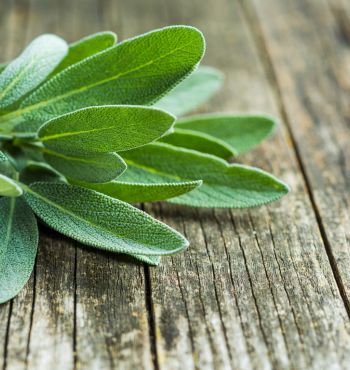
Aromatic sages are a popular choice among gardeners and herbal enthusiasts for their delightful scents that add a burst of fragrance to any space. These sages not only beautify your garden with their vibrant colors but also fill the air around them with their enticing aromas. Let’s explore some of the most captivating aromatic sages:
Thyme-leafed Sage
The Thyme-Leafed Sage, scientifically known as Salvia officinalis ‘Thymifolia’, is a charming and compact variety that produces small leaves resembling the leaves of thyme. Its aromatic foliage releases a delightful scent that is reminiscent of both thyme and traditional sage.
Key features of Thyme-Leafed Sage:
- Compact and low-growing plant, perfect for borders and containers.
- Exudes a pleasant fragrance that fills the surroundings.
- Ideal for culinary uses, as its leaves are flavorful and aromatic.
Berggarten Sage
Berggarten Sage, known as Salvia officinalis ‘Berggarten’ in Latin, is a unique and elegant sage variety with attractive broad leaves that have a velvety texture, making them a delight to touch. Its leaves give off a fresh and invigorating aroma, which is perfect for sensory gardens.
Key features of Berggarten Sage:
- Distinctly broad and velvety leaves for a visually striking appearance.
- Produces a refreshing fragrance that enchants the senses.
- Thrives well in both sunny and partially shaded areas of the garden.
Golden Sage
Golden Sage, scientifically called Salvia officinalis ‘Icterina’, is a stunning sage variety that adds a touch of golden elegance to any garden. Its vibrant bright green foliage is edged with a stunning golden-yellow hue, creating a captivating visual appeal. Moreover, its leaves release a sweet and inviting scent, adding to the overall sensory experience.
Key features of Golden Sage:
- Striking golden-yellow variegated leaves that provide a stunning contrast.
- Emits a sweet and pleasant fragrance that entices passersby.
- Thrives in well-draining soil and requires minimal maintenance.
These aromatic sages are not only visually captivating but also add a wonderful olfactory dimension to your garden. Incorporating these fragrant herbs will not only enhance the aesthetic appeal of your outdoor space but also provide you with a delightful sensory experience.
5. Sage Varieties For Tea
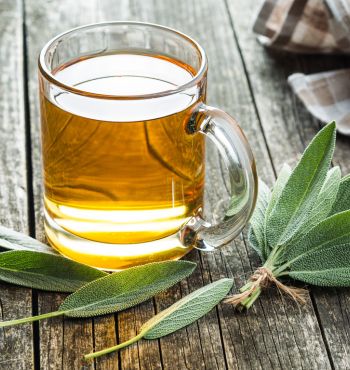
Discover the diverse sage varieties perfect for brewing a soothing cup of tea. Experience the unique flavors and aromas of different types of sage plants, offering a delightful twist to your tea-drinking experience.
In this section, we will explore 3 different types of sage plants that are perfect for brewing flavorful and aromatic teas. From the distinct flavors of Dalmatian Sage to the soothing properties of Blue Sage and the unique taste of Black Sage, these sage varieties are sure to elevate your tea-drinking experience. Keep reading to learn more about each variety and discover how you can incorporate them into your daily tea rituals.
Dalmatian Sage
Dalmatian Sage (Salvia officinalis ‘Dalmatian’) is a popular choice for tea enthusiasts due to its robust flavor and medicinal properties. This variety is characterized by its grayish-green leaves and delicate purple flowers. Dalmatian Sage tea is known for its strong and earthy taste, making it a perfect brew for those who enjoy bold flavors. In addition to its distinctive flavor, Dalmatian Sage is also believed to have various health benefits, including improved digestion and boosted cognitive function.
Blue Sage
Blue Sage (Salvia azurea) is a beautiful and aromatic herb that is widely used for its therapeutic properties. This variety is known for its striking blue flowers and silver-gray foliage. Blue Sage tea is cherished for its calming and relaxing effects, making it an ideal choice for those seeking a moment of tranquility. The tea has a mild and floral flavor profile, which pairs well with chamomile or lavender for a soothing blend. Apart from its calming nature, Blue Sage is also believed to have anti-inflammatory properties and can help relieve respiratory issues.
Black Sage
Black Sage (Salvia mellifera) is a unique variety that is native to California and Mexico. This drought-tolerant plant is identified by its dark green aromatic leaves and vibrant purple or white flowers. Black Sage tea has a distinct and slightly bitter taste, leading many to describe it as an acquired flavor. However, this variety is highly valued for its therapeutic benefits, such as relieving sore throat and respiratory congestion.
Native American tribes have long used Black Sage for its medicinal and ceremonial purposes, making it a culturally significant herb. Incorporating these sage varieties into your tea collection not only adds a range of flavors but also provides an array of health benefits. Experiment with blending different sage varieties together or combining them with other herbs to create your own signature tea blends. Remember to harvest the leaves when they are at their peak freshness and dry them properly to preserve their flavors. Sip, unwind, and embrace the soothing nature of these sage-infused teas.
Frequently Asked Questions On Different Types Of Sage Plants
What Are The Different Types Of Sage Plants?
Sage plants encompass a wide variety, including common sage, pineapple sage, and white sage, each with distinctive appearances and aromatic profiles.
How Do I Choose The Right Sage Plant For My Garden?
Consider factors like climate, soil conditions, purpose (culinary or ornamental), and growth habits when selecting the ideal sage plant for your garden.
Can Sage Plants Be Grown Indoors?
Yes, certain sage varieties like culinary sage can be grown successfully indoors if provided with adequate sunlight, well-draining soil, and regular watering.
Conclusion
Sage plants offer a wide variety of options for gardeners and herbal enthusiasts alike. From culinary sage to the medicinal benefits of sage essential oil, there is a sage plant to suit every need. Whether you want to add flavor to your dishes or enjoy the soothing effects of sage tea, exploring the different types of sage plants can be a delightful and enriching experience.
So, go ahead and cultivate your own sage garden and enjoy the many benefits these versatile plants have to offer.
